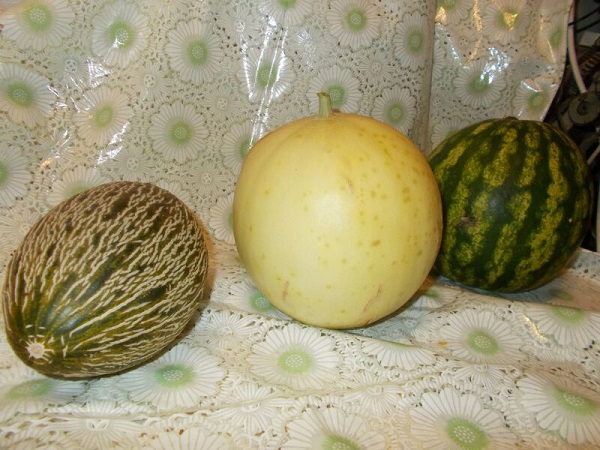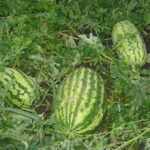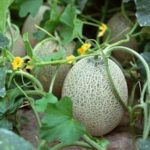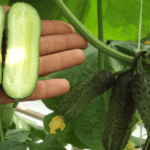Despite the appearance of relatively resistant to cold temperatures and disease varieties, the cultivation of melons, watermelons, and cucumbers is not consistent. A sharp cooling, high humidity and the spread of fusarium cause a decrease in yield and sometimes death of the plant. Inoculation of melon and other sensitive crops on the pumpkin helps prevent these problems.
Table of contents
Benefits of grafting melons, watermelons and cucumbers on pumpkin
Plant resistance to adverse climate and disease, survival rate and development rate depends on the root system. To improve these characteristics, a melon, a cucumber or a watermelon is grafted onto a stronger crop - a pumpkin or zucchini.
A melon (graft) grafted onto a pumpkin (stock) can withstand a decrease in soil t to + 16 °, and the own-rooted plant feels depressed and slows down in development.
Pumpkin has a large number of small roots, intensively absorbing moisture and nutrients from the soil. Therefore, melon, cucumber or watermelon, grafted on a pumpkin, develops faster, which accelerates the ripening of fruits for 10-12 days. This is important when growing melons, cucumbers and watermelons in regions with a short summer crop: Siberia, central Russia, in the Urals.
Pumpkin roots are less sensitive to moisture. Long rains practically do not lead to rotting of the root collar and the development of fusarium wilt.
- Watermelon grafted on a pumpkin
- Melon grafted on a pumpkin
- Pumpkin Cucumbers
Grade quality fruit grafted melon does not change. Intensive nutrition and accelerated metabolism only increases the aroma and sweetness of the fruit.Due to the lack of slowdown in cold weather, the grafted melon fruits are larger.
Ideal conditions
To calculate the time of vaccination are guided by the time of transplantation of plants in open ground. The soil should warm up to + 16 ° С, in the middle zone of the Russian Federation this occurs in the third decade of May, and in Siberia in the first decade of June. By the time of transplantation, the grafted plant should be 30-35 days old.
Seeds are sown in late April or early May. The big difference in the size of the stems of the scion and rootstock reduces the survival rate. Therefore, melon seeds are sown earlier by 3 days so that the seedlings are ahead of the pumpkin in development. The procedure is started when the first true leaves are formed on the shoots.
In later periods, the plant will not have time to thoroughly settle down at the time of transplantation into the ground. And long-term development in the home conditions leads to the stretching and weakening of the plants.
Technology and ways to instill
For vaccination you will need: a sharp safe blade, tapes of non-woven material or polyethylene for tying, graft clamps. Before the procedure, the instrument is disinfected with alcohol, one side is wrapped with tape.
There are three main ways of grafting, besides the method of splitting. Procedures carried out at home, guarantee only 70% -80% survival rate.

In the center of the pumpkin
A rather complicated procedure that requires some skill and knowledge of technology. If it is held for the first time, it is desirable to attract an assistant.
Stages:
- at the rootstock, the upper part with the first leaf above the cotyledons is perpendicularly cut;
- between the cotyledons in the center of the stem, they are pierced with an awl to a depth of 1.5 cm
- the scion is cut at the level of the soil, scrape the skin off the bottom of 1.5 cm;
- a graft stem is inserted into the puncture hole for the entire length;
Tissue grafted plants should be in close contact. After this, the junction is tied with a tape and fixed with a clip.
The approach of plants
This is a relatively simple procedure that a newbie does well with.
Stages:
- pumpkin and melon seeds sown nearby;
- under the cotyledons they remove the thin skin (epidermis) of the plant stems by 15-20 mm;
- plant tissue tightly pressed against each other;
- tied and fastened with a clip.
There is a second variant of the procedure. On the stock and graft make cuts (tongues) of the same size (1.5 cm) in opposite directions. The tongues are threaded into each other "lock" and fixed.
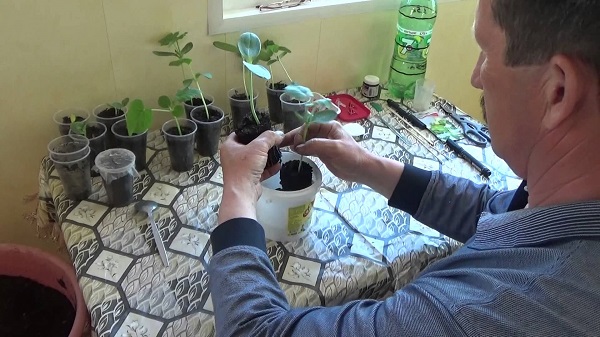
After 5 days, the graft stem below the inoculation is slightly crushed with the fingers. This procedure is carried out daily until the melon stem is dry. After 6-8 days, the stem of the pumpkin above the vaccine is removed. The root of the graft cut during transplantation into the ground.
In the side of the stem
The rootstock is removed from the growing point so that only the first true leaf and the cotyledon leaves are left. A 1.5-2-2 cm long straight cut is made on its stem. The depth of cut should reach the middle of the stem.
Graft cut off the soil. On both sides of the stem, from the side of the cotyledon leaves, they peel the length of the stock cut. Slightly bending the stem of the stock, open the incision and insert the graft, ensuring that the tissues fit snugly, tied with tape.
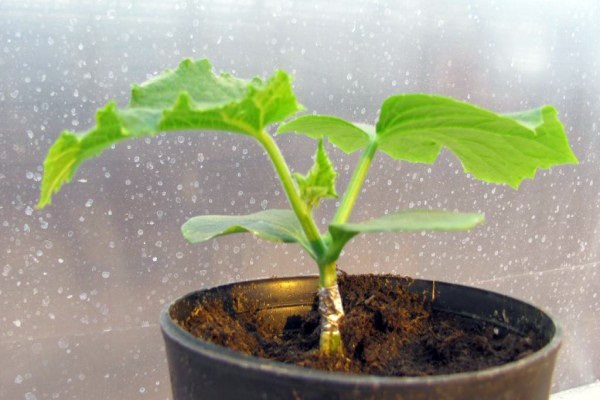
Care after the procedure
After the procedure, the soil surface is mulched with wet sawdust. After covering with glass jars or plastic bottles with cut-off bottom.
During the week, maintain a humidity level of 90-95% and t +25 ° C. To do this, the containers are removed on the windowsill, located above the battery and shaded from bright light. The inner walls of the bottle are sprayed daily with warm water.
Plants are ventilated, daily opening the surface of the pot for 1-2 minutes. Watered every day with warm and distilled water, avoiding the ingress of moisture to the vaccination site.
After this, airing is increased, and after 2-3 days the caps are removed.
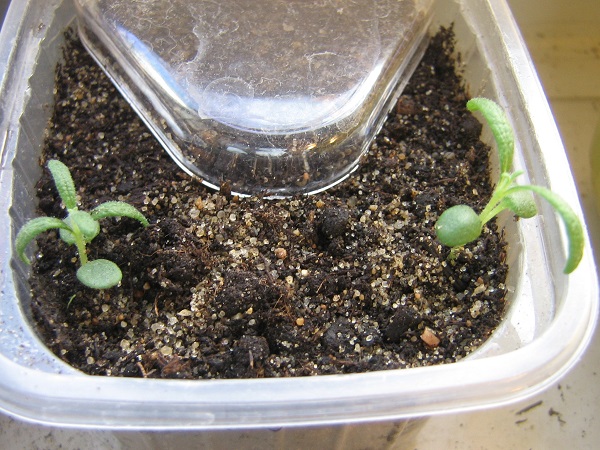
In the future, support the average t + 20 ° C- + 25 ° C during the day and about + 18 ° C at night. Watering as the earthen clod dries. A few days before transplantation, plants are fed with mineral fertilizers for seedlings and hardened, bringing to fresh air. After transplanting, they take care of them like an ordinary pumpkin.
Plants that are planted for the first time, take root difficult and give a small crop. Therefore, immediately transfer all planting melons on grafted plants is unwise. This is done gradually after gaining experience, finding the ideal rootstocks and grafts.
